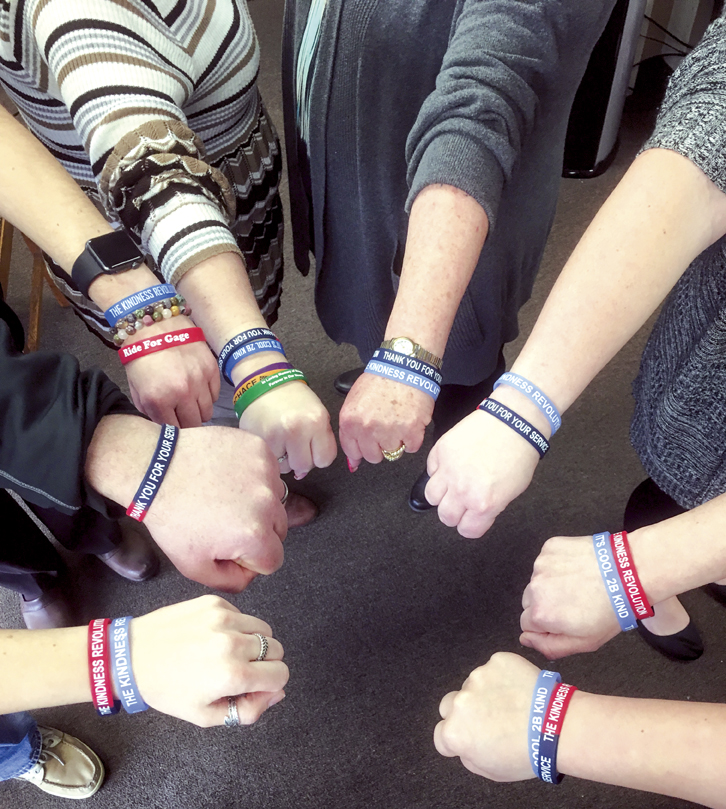Will anything harden this market?
Writing in August 2017, Phillip Masi sounded almost giddy about the prospects for condominium and homeowners associations shopping for insurance for the coming year. “The community association insurance outlook for 2018 remains positive,” wrote Masi, senior vice president of Assured Partners in Lake Mary, Florida. “Every time we think we are starting to see a bottoming out of the property insurance rates, they continue to surprise us and go lower.”
Then, two days after Masi’s column was published, Hurricane Harvey struck the Gulf Coast; Hurricane Irma followed a month later. Would that finally harden the market for condo association coverage? Apparently not, at least not outside of Florida.
“The market is as soft as I’ve seen it in this current market cycle,” says Mark McLallen, president of CISA Insurance, an Illinois-based agency that specializes in insuring condominium associations in Illinois and Wisconsin.
“The market may have bottomed out and hardened just a hair,” he adds, “but there are a lot of fish swimming in this pond,” a reference to the abundant capacity chasing condominium association business.
In response to the competitive market, “we’ve done all the pricing [reductions] we can do and still be profitable,” he continues. Any further accommodations will have to come through coverage enhancements.
Operating in the Northeast, Edward Mackoul, president of Mackoul Risk Solutions in New York, finds the market to be “stable for the most part.”
“We are seeing slight [premium] increases, between 3% and 5%, but I don’t see us hitting a full-blown hard market with double-digit increases,” he says. “Unless something changes, I see conditions staying like this for the next year or two.”
Risk shifting
If there’s anything that’s picking up the slack in premium, according to Mackoul, it’s a subtle shift in risk to condominium associations and individual unit owners.
“We are seeing more and more carriers adding percentage deductibles for wind damage,” he says, “as well as more of them adding per-unit water damage deductibles.”
“The market is as soft as I’ve seen it in this current market cycle. [It] may have bottomed out and hardened just a hair, but there are a lot of fish swimming in this pond.”
—Mark McLallen
President
CISA Insurance
Regarding liability coverage, Mackoul notes that association risk purchasing groups organized to obtain high commercial umbrella liability limits have recently lost their lead carrier or tightened up on their underwriting guidelines and policy limits.
“This is restricting the number of umbrella options available to community associations,” he says. “Eventually, that will lead to higher rates for association umbrellas.”
As for individual unit-owners, Mackoul says they can expect to find themselves solely responsible for all losses within their units, even though associations may have shared some of those losses in the past.
“Individual owners are picking up a larger portion of claims,” he says. “More and more associations are amending their bylaws or passing resolutions making an owner potentially responsible for an association’s deductible if a claim happens in their unit.
“If the association has a $5,000 deductible and the damage is within one unit, that unit owner might be responsible for the entire deductible,” he says. “If the loss affects multiple units, the owners would all owe part of the deductible, with the association only responsible for the deductible for the portion of the damage to a common area.”
Recession hangover
Hangover from the real estate recession is compounding property claims, says McLallen.
“We still have some clients trying to recover from the recession,” he says. “They have insufficient reserves and delayed maintenance, so hail and catastrophe claims are a challenge.
“Over the past five years the average hail claim has quadrupled,” he notes, adding that CISA frequently has to “address false expectations” that a worn-out roof will be completely replaced by insurance after a hail storm.
Increasingly, McLallen finds those expectations driven by roving building contractors, often from out of state, who persuade associations to file claims for roof damage that is, as often as not, the result of normal wear and tear, not storm damage.
Even when a carrier succeeds in denying coverage for a maintenance claim, the involvement of contractors often prolongs the resolution of a claim by 12 to 18 months, according to McLallen.
McLallen is also witnessing changes since the recession that are reversing a long-term trend. In place of apartment owners converting units into owner-occupied condominiums, he sees a growing number of “de-conversions” of condos into rental apartments.
“We’re seeing communities go from 30% rentals to 40% or 45%,” he says. “As the rental rate goes up, claims go up.” According to McLallen, property deteriorates and accidents increase as the percentage of units held for rental increases, and many associations are acting to restrict short-term unit rentals.
Slip and fall claims are becoming more common and costlier, McLallen notes, especially among the elderly, as Medicare and Medicaid become ever more systematic in seeking reimbursement from any party sharing responsibility for an injury.
“In the past, we would rarely see medical payment claims,” he says. “But since Medicare and Medicaid intensified their reimbursement and subrogation operations, “we now see med pay claims routinely from members of associations and their guests.”
“We are seeing more discrimination and employment practices claims. Claimants know they might scare an association into doing what they want, and plaintiffs’ attorneys know it is cheaper for the insurance company to settle most of these claims than it is to fight them.”
—Edward Mackoul
President
Mackoul Risk Solutions
Employment
Mackoul agrees that there has been an increase in liability claims against condo associations, especially regarding employment-related issues.
“We are seeing more discrimination and employment practices claims,” he says. “Claimants know they might scare an association into doing what they want, and plaintiffs’ attorneys know it is cheaper for the insurance company to settle most of these claims than it is to fight them.
“So there are plenty of examples where an association is justified in terminating an employee,” Mackoul adds, “but still is sued and has to watch the claimant get paid.”
Denise Caballero, liability claims manager for Mackoul Risk Solutions, tells of one case where an employee of a contractor hired for a $700 paint job submitted a $4 million claim for injuries he sustained when he fell off a paint can he was using as a stool.
“This was very disturbing, considering that the property owner had no supervisory responsibility for the worker,” Caballero says.
Cyber
Cyber liability is a growing exposure for every kind of organization, and condominium associations are no different.
“The exposure can be significant,” says Mackoul. “Unlike co-ops, most condominium or homeowners associations don’t have much personal nformation on their owners, but a major exposure arises if there is a breach of dwelling owners’ personal information stored by a property management firm.
“Using a property manager does not relieve the association of the responsibility of informing unit owners of a breach and taking whatever additional steps are required,” he adds. “Co-ops have an even greater exposure, as they normally maintain personal information on their owners and prospective buyers.”
According to Mackoul, there are cyber policies tailored for community associations that provide coverage for the costs to notify individuals of a breach, provide credit-monitoring services to affected individuals, and defend any suits by affected individuals, plus public relations costs to restore the community’s reputation.
“Cyber protection is often underfunded in community associations,” says McLallen. “There’s a lot of sensitive info packed into those networks.”
For more information:
CISA Insurance
www.cisainsurance.com
Mackoul Risk Solutions
www.mackoul.com
The author
Joseph S. Harrington, CPCU, is an independent business writer specializingin property and casualty insurance coverages and operations. For 21 years, Joe was the communications directorfor the American Association of Insurance Services (AAIS), a P-C advisory organization. Prior to that, Joe worked in journalism and as a reporter and editor in finanacial services.






